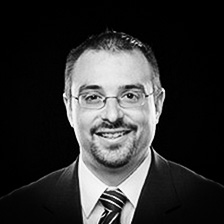Puritanism and its Reformed-pietist successors constantly vacillated between whether they were rebuilding Christendom by making towns and eventually nations into virtually Christian societies, or whether they were advocating a pure, called out church. Edwards had strong commitments to both ideals. Heir to the Puritan establishment and part of a powerful ruling class, he was jealous of the privileges of ministerial prestige in town and province. He looked forward to a worldwide Reformed Christendom as the millennium approached.
Yet he was also a luminary among the international awakeners whose insistence in conversionism could—like earlier Puritanism—be disruptive of the standing order. The awakeners worked on the premise that many church members, including many clergy were unconverted. The implication seemed to be that true churches should be made up of true believers only. . . . Some had become Baptists, applying the logic of converts-only purity to both sacraments. It is easy to see why Edwards’ opponents would accuse him of moving toward separatism.
Edwards wanted rather to resolve the old conundrum without resorting to separatism. He would show how to maintain both the purity of the church and the establishment.
George M. Marsden, Jonathan Edwards: A Life (New Haven: Yale University Press, 2003), 350-51

 Sinclair Ferguson uses the Marrow controversy in 18th century Scotland as a historical lens through which to examine the issues of legalism, antinomianism, and assurance. Ferguson’s thesis, as reflected in the title of the book, is that both legalists and antinomians err in separating the benefits of Christ from Christ himself. The solution to both is to not seek the benefits of Christ apart from the person of Christ. In all, this is a helpful book full of interesting history and insightful theology. I think the one improvement could be situating the response of Boston and the Marrow men in the broader context of Reformed theology. Did they respond similarly or differently to these problems than Reformed theologians in other times and places? In the multitude of historical counselors there is oftentimes safety.
Sinclair Ferguson uses the Marrow controversy in 18th century Scotland as a historical lens through which to examine the issues of legalism, antinomianism, and assurance. Ferguson’s thesis, as reflected in the title of the book, is that both legalists and antinomians err in separating the benefits of Christ from Christ himself. The solution to both is to not seek the benefits of Christ apart from the person of Christ. In all, this is a helpful book full of interesting history and insightful theology. I think the one improvement could be situating the response of Boston and the Marrow men in the broader context of Reformed theology. Did they respond similarly or differently to these problems than Reformed theologians in other times and places? In the multitude of historical counselors there is oftentimes safety.